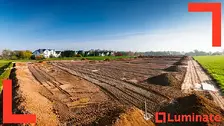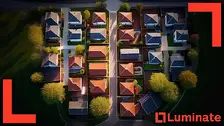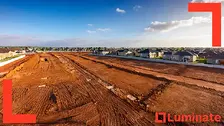Development Loans in New Zealand: Complete Guide to Specialized Lending
 By
Trent Bradley
·
14 minute read
By
Trent Bradley
·
14 minute read

Development loans represent the backbone of New Zealand's property development industry, providing the specialized financing required for transforming development concepts into completed projects. Unlike standard property mortgages, development loans accommodate unique project characteristics including staged funding, construction risks, and irregular cash flows. This comprehensive guide explores all aspects of development lending in New Zealand, from application processes through successful loan completion.
Table of Contents
- Understanding Development Loan Fundamentals
- Types of Development Loans
- Lender Types and Market Players
- Application Process and Requirements
- Loan Structure and Terms
- Security Requirements and Documentation
- Pre-Sales and Presale Requirements
- Interest Rates and Pricing
- Facility Management and Monitoring
- Common Challenges and Solutions
- Exit Strategies and Loan Completion
- Regional Market Variations
- Future Trends in Development Lending
- Working with Development Loan Specialists
- Frequently Asked Questions
Key Takeaways
- Development loans differ fundamentally from standard mortgages with staged funding aligned to project milestones, interest-only structures during development periods, higher risk premiums (typically 1-4% above investment property rates), and comprehensive security requirements
- Loan-to-cost ratios typically fund 60-75% of total development costs requiring substantial equity contributions from developers, with higher LTC ratios available for experienced developers or projects with strong pre-sales at higher rates
- Staged funding releases funds in phases including land settlement, consent approval, construction commencement, practical completion, and sales milestones through verified progress claims with quantity surveyor certification and council inspections
- Pre-sales requirements typically range from 30-70% of project units depending on development type, market conditions, and risk assessment—demonstrating market demand while reducing sales risk for lenders
- Application process requires extensive documentation including detailed feasibility studies, market research, cost estimates, program schedules, professional team credentials, personal financial information, and development experience evidence
- Interest rates comprise base funding costs plus risk margins (1.5-6% above base rates), administrative costs, and profit margins varying based on developer experience, project complexity, market conditions, security strength, and pre-sales levels
- Common challenges include approval delays from complex assessment requirements, cost overruns exceeding estimates, timeline extensions requiring facility extensions, market condition changes affecting sales, and achieving required pre-sales thresholds
Understanding Development Loan Fundamentals
Development loans are specialized financing facilities designed specifically for property development projects, incorporating unique features that address development-specific risks and requirements.
Purpose-Built Financing: Development loans are specifically structured for property development activities including land acquisition, planning approval, construction, and project completion. Standard investment property loans cannot accommodate development project characteristics and risks.
Staged Funding Approach: Development loans release funds in stages aligned with project milestones including land settlement, consent approval, construction commencement, practical completion, and sales milestones. Staged funding manages lender risk while providing developers with capital when needed.
Interest-Only Structure: Most development loans operate on interest-only basis during development periods with principal repayment through project sales or refinancing. Interest-only structure improves cash flow during construction phases when projects generate expenses but no revenue.
Higher Risk Premiums: Development loans carry higher interest rates than standard property loans, typically 1-4% above investment property rates, reflecting increased risks including market volatility, construction complications, and regulatory delays.
Comprehensive Security: Development loans require extensive security including first mortgages over project land, cross-guarantees from related entities, personal guarantees from principals, and often additional property security. Security requirements reflect higher risk profiles and potential loss exposure.
Progress Monitoring: Lenders implement rigorous monitoring including quantity surveyor reports, site inspections, financial reporting, and compliance verification. Monitoring ensures appropriate fund utilization while tracking project progress against approved plans.
Types of Development Loans
Development lending encompasses various loan types designed for different project characteristics, developer experience levels, and risk profiles.
Construction Loans: Pure construction loans fund building construction after land acquisition and planning approval. Construction loans typically provide 60-80% of construction costs with staged funding against verified progress and require separate land acquisition funding.
Development Finance Facilities: Comprehensive development facilities provide integrated funding for all project phases including land acquisition, planning, construction, and working capital. Integrated facilities simplify funding arrangements while providing complete project financing.
Land Banking Loans: Specialized loans for land acquisition and holding during planning and approval periods. Land banking facilities often transition into construction funding upon consent approval with different interest rates and terms for different phases.
Project Finance Facilities: Large-scale project finance involves multiple tranches with different terms for land, infrastructure, construction, and permanent financing. Project finance typically applies to substantial developments with institutional-quality documentation and returns.
Mezzanine Development Loans: Subordinated debt facilities combining debt and equity characteristics providing additional funding above senior debt limits. Mezzanine loans typically carry higher interest rates plus profit participation in exchange for increased risk assumption.
Bridge Finance: Short-term funding bridging between project completion and permanent financing or sale. Bridge loans provide temporary funding during transition periods with higher rates reflecting short-term nature and repayment risks.
Lender Types and Market Players
New Zealand's development loan market includes diverse lender types with different capabilities, preferences, and terms.
Major Banks: Traditional banks including ANZ, ASB, BNZ, Westpac, and Kiwibank provide development loans primarily for established developers with substantial projects and strong financial positions. Banks offer competitive rates but stringent requirements and extensive documentation.
Specialist Finance Companies: Non-bank lenders specializing in development finance including Resimac, Pepper Money, and other specialist providers. These lenders often provide more flexible terms and faster approval but typically at higher rates than banks.
Private Credit Funds: Institutional credit funds providing development finance seeking higher returns than traditional investments. Private funds often provide substantial facilities for experienced developers with sophisticated projects.
High Net Worth Lenders: Individual wealthy investors providing development loans seeking attractive returns with direct investment control. Private individuals often provide flexible terms but may have limited capacity and varying sophistication.
Property Finance Brokers: Specialist brokers connecting developers with appropriate lenders while providing application support and ongoing relationship management. Brokers often access lender panels and provide valuable market knowledge.
International Lenders: Offshore institutions providing development finance for substantial projects meeting their investment criteria. International lenders often provide competitive terms but may have complex approval processes and documentation requirements.
Application Process and Requirements
Successful development loan applications require comprehensive preparation, professional presentation, and strategic lender engagement.
Application Preparation: Development loan applications require extensive documentation including detailed feasibility studies, market research, cost estimates, program schedules, professional team credentials, and personal financial information. Application quality significantly influences approval prospects and terms.
Financial Documentation: Comprehensive financial information including personal tax returns, financial statements, asset schedules, liability summaries, and cash flow projections. Financial documentation demonstrates borrowing capacity and repayment ability supporting loan approval.
Project Documentation: Detailed project information including site plans, development concepts, regulatory approvals, construction contracts, sales evidence, and professional reports. Project documentation validates development feasibility and risk management approaches.
Professional Team Credentials: Evidence of experienced professional teams including architects, engineers, project managers, and contractors with relevant experience and appropriate insurance coverage. Professional team quality significantly influences lender confidence and approval decisions.
Market Research: Comprehensive market analysis including demand assessment, competition analysis, comparable sales, and absorption projections. Market research validates revenue assumptions and supports pricing strategies underpinning loan repayment capacity.
Development Experience: Evidence of successful development experience including previous projects, references from lenders and professionals, and demonstration of relevant expertise. Development track record significantly influences lender assessment and loan terms.
Loan Structure and Terms
Development loan structures incorporate specialized terms addressing unique development characteristics and risk profiles.
Interest Rate Structure: Development loans typically charge floating rates with margins ranging from 1.5-6% above base rates depending on risk assessment, developer experience, and project characteristics. Rates may vary between development phases reflecting different risk profiles.
Loan-to-Cost Ratios: Development loans typically fund 60-75% of total development costs requiring substantial equity contributions from developers. Higher LTC ratios may be available for experienced developers or projects with strong pre-sales but at higher rates.
Facility Limits: Loan limits reflect project costs, security values, and developer capacity with facilities ranging from hundreds of thousands for small projects to hundreds of millions for major developments. Facility sizing requires careful cash flow analysis and security assessment.
Draw-Down Arrangements: Funds release through verified progress claims including quantity surveyor certification, council inspections, and compliance verification. Draw-down procedures ensure appropriate fund utilization while managing construction progress risks.
Interest Payment Options: Development loans typically offer interest capitalization during construction with interest added to loan balances rather than requiring monthly payments. Interest capitalization improves cash flow but increases total project costs.
Facility Terms: Development loan terms typically range from 12 months for simple projects to 36 months for complex developments with extensions available subject to performance and market conditions. Term selection should align with realistic development schedules.
Exit Requirements: Development loans require clear exit strategies including project sales, refinancing arrangements, or alternative repayment methods. Exit planning ensures loan repayment while providing lenders with confidence in facility recovery.
Security Requirements and Documentation
Development loans require comprehensive security arrangements reflecting higher risk profiles and potential loss exposure.
Primary Security: First registered mortgages over all project land including development sites and any additional properties securing facilities. Primary security provides lenders with priority recovery rights in default scenarios.
Cross-Guarantees: Corporate cross-guarantees between related entities ensuring all borrower assets support facility repayment. Cross-guarantees prevent asset shifting while providing lenders with maximum recovery potential.
Personal Guarantees: Personal guarantees from company directors and principals providing additional security beyond corporate assets. Personal guarantees ensure personal accountability while providing lenders with recourse to personal assets.
Additional Security: Supplementary security may include mortgages over other properties, chattel securities, or insurance assignments. Additional security provides extra protection while meeting lender security requirements.
Security Documentation: Comprehensive legal documentation including facility agreements, mortgage instruments, guarantee documents, and insurance requirements. Security documentation requires experienced legal representation ensuring proper protection for all parties.
Insurance Requirements: Extensive insurance coverage including public liability, professional indemnity, contract works, and key person insurance. Insurance requirements protect against various risks while ensuring adequate coverage for potential claims.
Covenant Compliance: Financial and operational covenants including regular reporting, expenditure controls, and performance milestones. Covenant compliance provides lenders with ongoing project monitoring while ensuring appropriate facility management.
Pre-Sales and Presale Requirements
Many development loans require pre-sales commitments demonstrating market demand while reducing sales risk for lenders.
Pre-Sales Thresholds: Lenders typically require pre-sales ranging from 30-70% of project units depending on development type, market conditions, and risk assessment. Pre-sales thresholds balance market validation with development flexibility.
Pre-Sales Quality: Lenders assess pre-sales quality including purchaser deposits, unconditional status, settlement timing, and purchaser financial strength. Quality pre-sales provide stronger risk mitigation than marginal commitments.
Pre-Sales Documentation: Comprehensive pre-sales documentation including sale and purchase agreements, deposit receipts, lawyer certificates, and purchaser financial verification. Documentation quality affects pre-sales recognition and facility approval.
Deposit Requirements: Pre-sales deposits typically range from 5-20% of purchase prices with higher deposits providing stronger buyer commitment. Deposit levels affect pre-sales recognition and risk assessment by lenders.
Sunset Clauses: Pre-sales agreements typically include sunset clauses enabling purchaser cancellation if development doesn't commence by specified dates. Sunset clause management prevents buyer cancellations while maintaining development flexibility.
Alternative Arrangements: Some lenders accept alternative arrangements including forward purchase agreements, rental guarantees, or end-buyer pre-approval in lieu of traditional pre-sales. Alternative arrangements provide flexibility while addressing lender risk concerns.
Interest Rates and Pricing
Development loan pricing reflects risk assessment, market competition, and lender positioning with significant variations between lenders and project types.
Base Rate Components: Development loan rates comprise base funding costs plus risk margins, administrative costs, and profit margins. Understanding rate components helps optimize pricing negotiations and lender selection.
Risk Margin Factors: Risk margins vary based on developer experience, project complexity, market conditions, security strength, and pre-sales levels. Risk assessment drives margin determination requiring comprehensive project presentation.
Market Competition: Competitive lender environments can reduce margins and improve terms while tight markets increase pricing. Market timing affects pricing negotiation and lender selection strategies.
Relationship Benefits: Strong lender relationships often provide pricing benefits through reduced margins, preferential terms, and streamlined approval processes. Relationship investment delivers ongoing value through multiple development cycles.
Fee Structures: Development loans typically include establishment fees, valuation costs, legal fees, and ongoing facility fees. Fee structures can significantly impact total funding costs requiring comprehensive cost analysis.
Rate Movement Management: Development loans typically use floating rates creating exposure to rate movements during development periods. Rate risk can be managed through hedging strategies or fixed-rate arrangements where available.
Facility Management and Monitoring
Successful development loan management requires ongoing communication, compliance, and relationship maintenance throughout development periods.
Progress Reporting: Regular progress reports including financial updates, construction progress, sales activity, and variance explanations. Quality reporting maintains lender confidence while demonstrating professional project management.
Draw-Down Management: Systematic draw-down processes including progress claims, quantity surveyor certification, and compliance verification. Efficient draw-down management maintains cash flow while meeting lender requirements.
Variation Management: Managing project variations including scope changes, timing adjustments, and cost variations through appropriate lender consultation and approval. Variation management maintains lender support while enabling necessary project adaptations.
Covenant Compliance: Maintaining compliance with facility covenants including financial ratios, reporting requirements, and operational milestones. Covenant compliance protects facility access while demonstrating responsible management.
Issue Resolution: Addressing problems promptly and professionally through collaborative approaches maintaining lender relationships. Problem resolution often determines ongoing lender support and facility continuation.
Performance Delivery: Delivering promised performance including timeline adherence, budget management, and quality outcomes. Performance delivery builds lender confidence while supporting future facility access.
Common Challenges and Solutions
Development loan management involves various challenges requiring proactive identification and professional resolution.
Approval Delays: Development loan approval can experience delays due to complex assessment requirements, market conditions, or documentation issues. Approval delays require early application, comprehensive preparation, and alternative lender engagement.
Cost Overruns: Development costs often exceed initial estimates requiring additional funding or scope adjustments. Cost overrun management requires adequate contingencies, flexible facilities, and proactive lender communication.
Timeline Extensions: Development projects frequently experience delays requiring facility extensions and additional interest costs. Timeline management requires realistic scheduling, contingency planning, and lender relationship maintenance.
Market Condition Changes: Market changes during development can affect sales prospects and facility performance. Market risk management requires conservative assumptions, flexible facilities, and adaptive strategies.
Pre-Sales Challenges: Achieving required pre-sales can prove difficult requiring marketing investment, pricing adjustments, or alternative lender arrangements. Pre-sales challenges benefit from early marketing, professional sales management, and flexible lender negotiations.
Regulatory Complications: Planning approvals and construction compliance can create delays and additional costs. Regulatory risk management requires experienced professionals, early engagement, and contingency planning.
Exit Strategies and Loan Completion
Successful development loan completion requires clear exit strategies and systematic facility closure processes.
Sales-Based Exits: Most development loans exit through project sales with loan repayment from sale proceeds. Sales exits require effective marketing, competitive pricing, and efficient settlement processes.
Refinancing Arrangements: Some development projects refinance into long-term investment loans retaining ownership for rental returns. Refinancing exits require adequate cash flows, appropriate security, and lender capability.
Partial Exits: Large developments may use partial exits with some sales repaying loans while retaining ownership of remaining assets. Partial exits provide flexibility while managing lender repayment requirements.
Portfolio Transfers: Experienced developers may transfer completed projects into investment portfolios using alternative financing arrangements. Portfolio strategies require sophisticated structuring and appropriate financing solutions.
Exit Timing: Exit timing significantly impacts returns through market positioning and competitive dynamics. Exit timing requires market monitoring and flexible strategy implementation.
Facility Discharge: Loan completion requires systematic facility discharge including final payments, security releases, and documentation closure. Discharge processes require professional coordination ensuring complete facility termination.
Regional Market Variations
Development loan markets vary across New Zealand regions reflecting different lender appetites, project types, and market conditions.
Auckland Development Loans: New Zealand's largest market offers diverse lender options but faces competitive pressure and stringent requirements. Auckland loans often require higher equity and stronger pre-sales but provide access to sophisticated lenders.
Provincial Market Lending: Provincial development markets typically offer fewer lenders but may provide more personal relationships and flexible approaches. Provincial lending often requires local market understanding and relationship development.
Rural Development Finance: Rural development faces unique lending challenges including limited lender appetite and perceived higher risks. Rural lending often requires specialized lenders and creative structuring approaches.
Tourism Market Lending: Tourism-dependent areas face lending challenges during economic downturns but may attract specialized lenders during growth periods. Tourism lending requires understanding market cyclicality and risk assessment.
Future Trends in Development Lending
Development lending continues evolving in response to market conditions, regulatory changes, and capital market developments.
Technology Integration: Digital platforms improving application processes, progress monitoring, and portfolio management. Technology advancement may streamline lending while reducing costs and improving transparency.
Sustainability Focus: Growing emphasis on sustainable development affecting lending criteria and terms. Sustainability focus creates opportunities for appropriate projects while potentially constraining traditional approaches.
Alternative Capital: Increasing involvement of alternative capital sources including credit funds, family offices, and international investors. Alternative capital may provide more flexible terms but with different requirements and relationships.
Regulatory Evolution: Banking regulations and monetary policy changes affecting lending capacity and pricing. Regulatory evolution requires ongoing monitoring and adaptive lending strategies.
Working with Development Loan Specialists
Professional development loan specialists provide valuable guidance throughout the entire lending process from application through successful completion.
At Luminate Finance, we specialize in New Zealand development lending and provide comprehensive support from initial loan strategy through successful project completion and facility discharge.
Our extensive network of development lenders including banks, specialist financiers, and private capital enables us to identify optimal lending solutions for diverse development projects across all regions and development types.
We work closely with developers to structure loan applications that optimize approval prospects while securing competitive terms and appropriate facility structures for successful project delivery.
Our comprehensive approach includes loan strategy development, application preparation, lender negotiation, and ongoing facility management supporting both current projects and future development opportunities.
Through our involvement in numerous development loan arrangements, we understand lender requirements, market conditions, and optimal structuring approaches that maximize approval success while minimizing costs and constraints.
Our professional network provides access to experienced legal, accounting, and development expertise supporting comprehensive loan solutions and successful project outcomes.
Frequently Asked Questions
What makes development loans different from standard property mortgages?
Development loans are purpose-built for property development activities with staged funding approach releasing funds aligned to project milestones (land settlement, consent approval, construction commencement, practical completion, sales) rather than single upfront advances. They operate interest-only during development periods with principal repayment through project sales or refinancing improving cash flow when projects generate expenses but no revenue. Development loans carry higher risk premiums (typically 1-4% above investment property rates) reflecting increased risks including market volatility, construction complications, and regulatory delays. They require comprehensive security including first mortgages over project land, cross-guarantees, personal guarantees, and often additional property security. Lenders implement rigorous monitoring including quantity surveyor reports, site inspections, financial reporting, and compliance verification. Standard investment property loans cannot accommodate development project characteristics and risks requiring specialized facilities designed specifically for development activities.
What loan-to-cost ratios can I expect and how much equity do I need?
Development loans typically fund 60-75% of total development costs requiring substantial equity contributions (25-40%) from developers. Higher LTC ratios may be available for experienced developers with proven track records, projects with strong pre-sales commitments (50%+ of units), projects in established markets with strong fundamentals, or where additional security is available, but these come with higher interest rates reflecting increased risk. For example, a $2 million development project might receive $1.4 million lending (70% LTC) requiring $600,000 developer equity. First-time developers often face lower LTC ratios (60-65%) requiring higher equity contributions due to lack of proven track record. Equity requirements protect lenders from cost overruns, market downturns, and construction delays while ensuring developers have meaningful "skin in the game" aligning interests between parties.
How does the staged funding draw-down process work?
Staged funding releases funds through verified progress claims at defined project milestones. The process involves developers submitting progress claims detailing completed work and costs incurred, independent quantity surveyors certifying work completion and values, council inspectors verifying compliance with consents and building codes, and lenders releasing funds upon receiving satisfactory certification and verification. Typical draw-down stages include initial draw for land settlement and establishment costs, planning phase draws for consent costs and professional fees, construction draws against verified construction progress (often monthly or bi-monthly), practical completion draw upon project substantial completion, and retention release after defects liability periods. Each draw typically releases 80-90% of claimed amounts with 10-20% retained until project completion protecting lenders from potential defects or incomplete work. Efficient draw-down management requires systematic documentation, professional quantity surveyor engagement, and maintaining positive lender relationships through transparent communication.
What pre-sales requirements do lenders typically impose?
Lenders typically require pre-sales ranging from 30-70% of project units depending on development type (apartments often require higher percentages than townhouses or houses), market conditions (stronger markets may accept lower pre-sales), developer experience (experienced developers may negotiate lower requirements), and project scale (larger projects often require higher pre-sales percentages). Pre-sales must be quality commitments including unconditional contracts or contracts subject only to standard conditions, purchaser deposits of 5-20% of purchase prices demonstrating genuine commitment, financially capable purchasers verified through bank pre-approvals or financial references, and settlement timing aligned with project completion. Lenders assess pre-sales through comprehensive documentation including sale and purchase agreements, deposit receipts, lawyer certificates, and purchaser verification. Pre-sales thresholds balance market validation (demonstrating demand and supporting pricing assumptions) with development flexibility (allowing developers to capitalize on market improvements during construction).
What interest rates and fees should I expect for development loans?
Development loan pricing comprises base rates plus risk margins totaling typically 5.5-12% annually depending on risk assessment. Risk margins of 1.5-6% above base rates reflect developer experience (experienced developers achieve lower margins), project complexity (simple projects command better pricing), market conditions (strong markets improve pricing), security strength (additional security reduces margins), pre-sales levels (higher pre-sales improve pricing), and lender competition (competitive environments reduce margins). Additionally, fees include establishment fees (1-3% of facility limits), valuation costs ($2,000-$10,000+ depending on project complexity), legal fees ($5,000-$20,000+ for comprehensive documentation), ongoing facility fees (0.5-1.5% annually), and quantity surveyor costs ($3,000-$15,000+ depending on project scale). Interest payment options typically offer capitalization during construction (interest added to loan balances improving cash flow but increasing total costs) or monthly payments from developer funds. Comprehensive cost analysis should include all interest, fees, and charges over realistic development periods.
What documentation do I need for development loan applications?
Comprehensive application preparation requires detailed feasibility studies analyzing project returns, risks, and viability, market research including demand assessment, competition analysis, and comparable sales, cost estimates prepared by quantity surveyors or experienced estimators with appropriate contingencies, program schedules showing realistic development timelines with critical path identification, professional team credentials demonstrating experience and capability, personal financial information including tax returns, financial statements, asset schedules, and liability summaries, development experience evidence including previous projects, references, and relevant expertise demonstration, site plans and development concepts showing project vision and design, regulatory approvals including resource consents or evidence of consent applications, construction contracts or contractor capability demonstrations, sales evidence including pre-sales agreements or market demand validation, and professional reports including geotechnical investigations, traffic assessments, or environmental studies. Application quality significantly influences approval prospects, terms offered, and processing timeframes. Incomplete or poor-quality applications face delays, additional information requests, or declines.
What are the main challenges in managing development loans?
Common challenges include approval delays from complex assessment requirements, extensive documentation needs, or unfavorable market conditions requiring early application, comprehensive preparation, and alternative lender engagement, cost overruns exceeding initial estimates requiring additional funding or scope adjustments managed through adequate contingencies and flexible facilities, timeline extensions from construction delays, regulatory complications, or weather requiring facility extensions and additional interest costs, achieving required pre-sales particularly in competitive or softening markets requiring marketing investment and pricing adjustments, market condition changes during development affecting sales prospects and facility performance, regulatory complications from planning approvals and construction compliance creating delays and costs, draw-down processing delays affecting cash flow managed through systematic documentation and professional communication, and maintaining covenant compliance including financial ratios, reporting requirements, and operational milestones. Successful management requires realistic scheduling, comprehensive contingency planning, strong lender relationships, proactive communication, professional project management, and experienced development teams capable of navigating challenges while maintaining lender confidence and facility access.
What exit strategies do development loans require?
Development loans require clear exit strategies demonstrating loan repayment capacity. Primary exit strategies include sales-based exits where project sales provide loan repayment (most common approach requiring effective marketing, competitive pricing, and efficient settlement), refinancing arrangements where completed projects refinance into long-term investment loans retaining ownership for rental returns (requires adequate cash flows and appropriate security), partial exits in large developments with some sales repaying loans while retaining ownership of remaining assets (provides flexibility while managing repayment), portfolio transfers where experienced developers move completed projects into investment portfolios using alternative financing (requires sophisticated structuring), or alternative exits including forward purchase agreements or institutional sales. Exit timing significantly impacts returns through market positioning and competitive dynamics requiring market monitoring and flexible implementation. Lenders assess exit strategies during application evaluating feasibility, market support, and developer capability to execute planned exits. Poor exit planning creates refinancing difficulties, forced sales at unfavorable pricing, or facility defaults requiring lenders to enforce security. Clear, realistic, well-supported exit strategies are essential for development loan approval and successful project completion.
Ready to secure optimal development loan arrangements with expert guidance? Contact Luminate Finance today to discuss how our comprehensive development lending expertise and extensive lender relationships can support your development success through appropriate loan structures and professional management.

Trent Bradley
Trent Bradley is a New Zealand financial advisor specializing in property-backed finance and investment consulting. With over 26 years of experience running his mortgage broking business, he has helped wholesale investors access high-yield property-backed loan opportunities. For the past 12 years, Trent has led Luminate Finance, a New Zealand finance company dedicated to connecting investors with secure property investment solutions.

































.png?//48413319.fs1.hubspotusercontent-ap1.net/hubfs/48413319/Featured%20images%20(14).png&width=247&height=126&name=Featured%20images%20(14).png)




